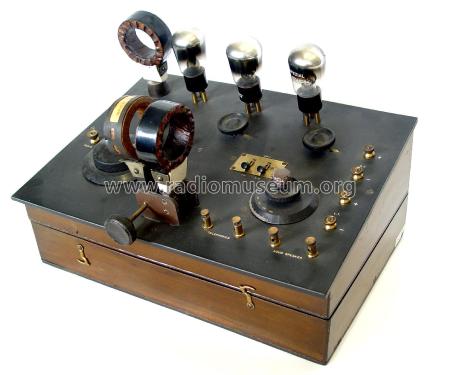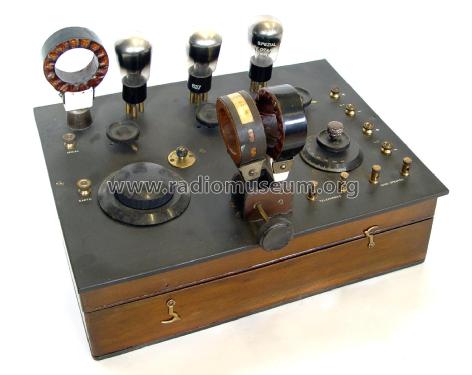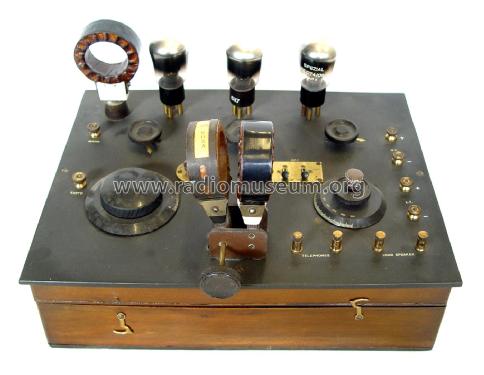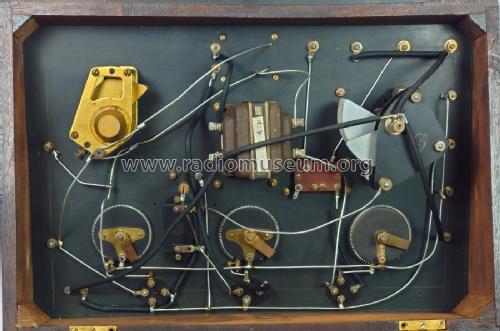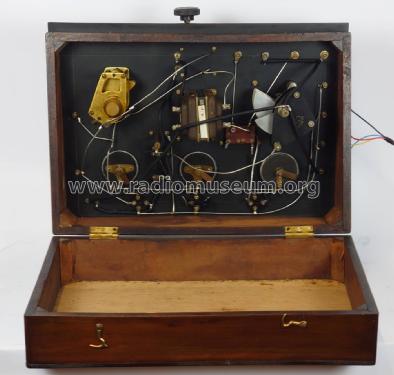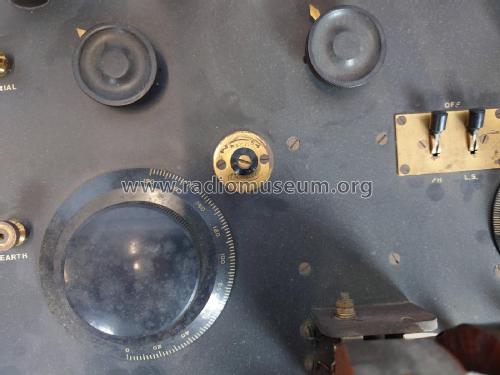TRF Receiver
Unknown - CUSTOM BUILT: GB
- Country
- Great Britain (UK)
- Manufacturer / Brand
- Unknown - CUSTOM BUILT: GB
- Year
- 1926 ??
- Category
- Broadcast Receiver - or past WW2 Tuner
- Radiomuseum.org ID
- 352703
- Number of Tubes
- 3
- Main principle
- TRF with regeneration
- Wave bands
- Wave Bands given in the notes.
- Power type and voltage
- Storage and/or dry batteries / 4, 80 Volt
- Loudspeaker
- - This model requires external speaker(s).
- Material
- Wooden case, TUBES VISIBLE.
- from Radiomuseum.org
- Model: TRF Receiver - Unknown - CUSTOM BUILT: GB
- Shape
- Tablemodel, slant panel.
- Dimensions (WHD)
- 410 x 280 x 310 mm / 16.1 x 11 x 12.2 inch
- Notes
-
3-Valve Battery Powered TRF Receiver Circa Mid 1920s
TRF receivers were the most common type of radio receiver in the early days of radio broadcasting. They are relatively simple in design, using a tuned radio frequency stage, a detector stage, and an audio amplifier stage.
The reaction in this receiver is possibly controlled by the twin honeycomb coil coupler. The coil coupler is used to tune the receiver to the desired radio frequency. The reaction is a type of regeneration that can be used to increase the gain of the receiver. However, it can also make the receiver more difficult to tune.
The receiver has both loudspeaker and headphone connections. This means that it can be used for either loudspeaker reception of local stations or headphone reception of distant stations.
The frequency band of operation and manufacturer of this receiver are unknown.
- Net weight (2.2 lb = 1 kg)
- 4.8 kg / 10 lb 9.2 oz (10.573 lb)
- Author
- Model page created by Musée des Radios Museum. See "Data change" for further contributors.
- Other Models
-
Here you find 118 models, 108 with images and 10 with schematics for wireless sets etc. In French: TSF for Télégraphie sans fil.
All listed radios etc. from Unknown - CUSTOM BUILT: GB
Collections
The model TRF Receiver is part of the collections of the following members.
